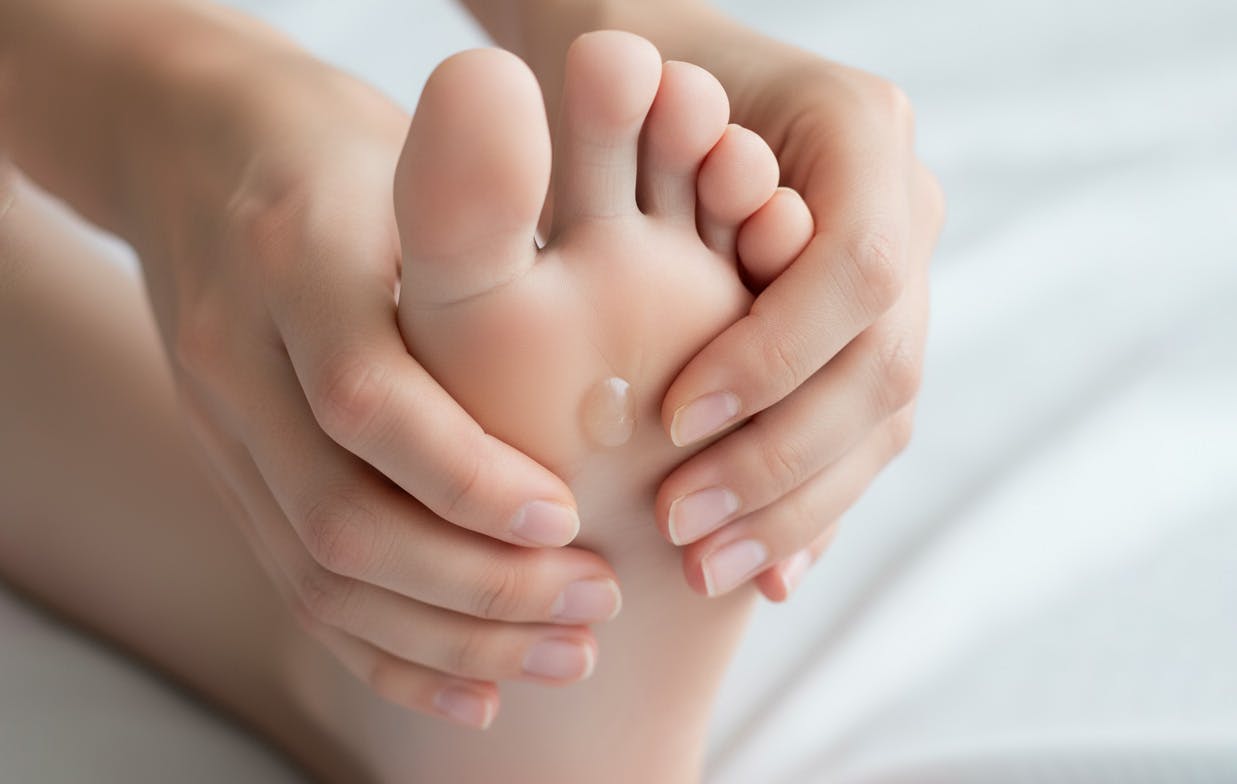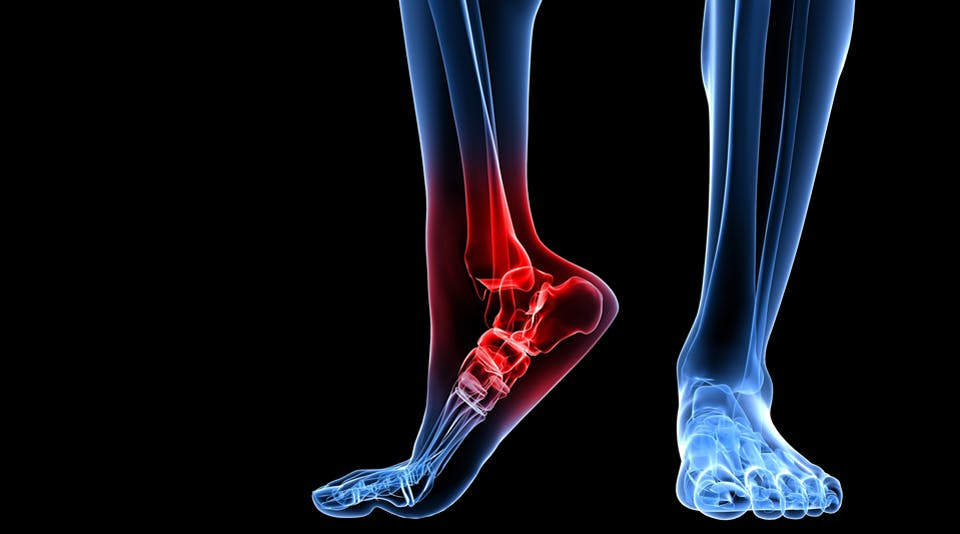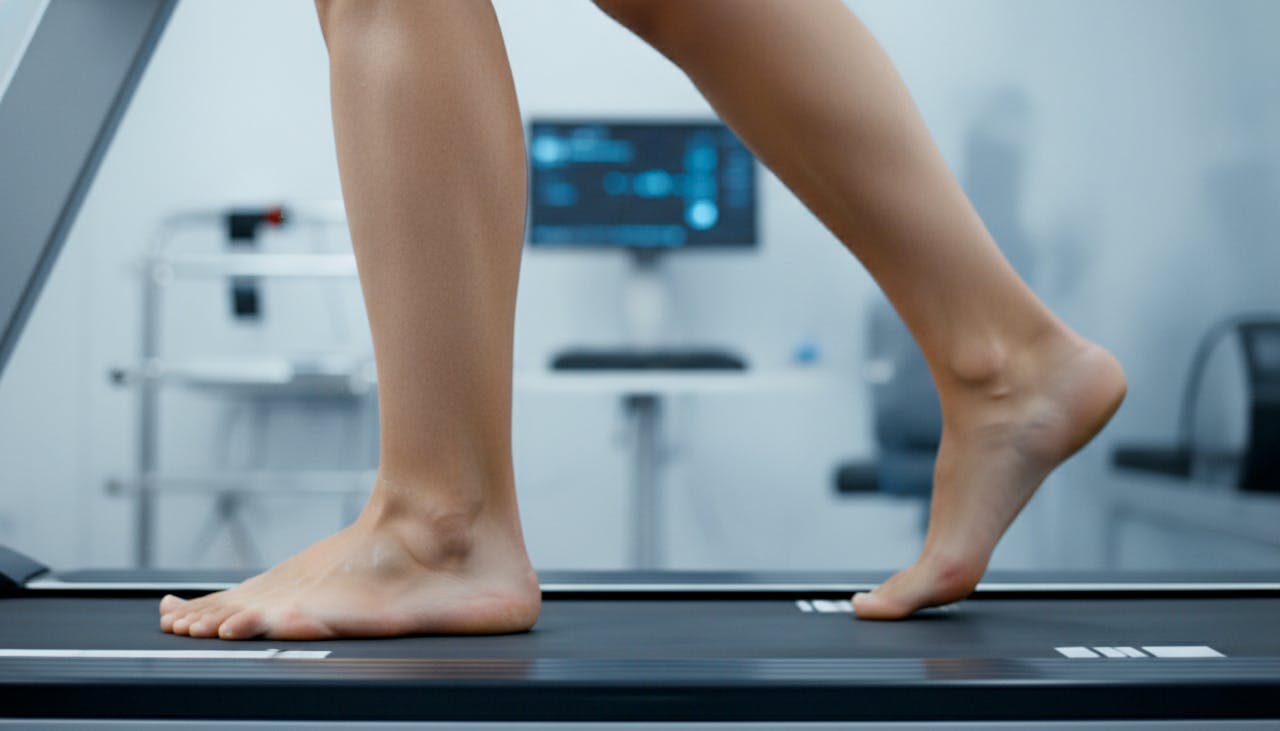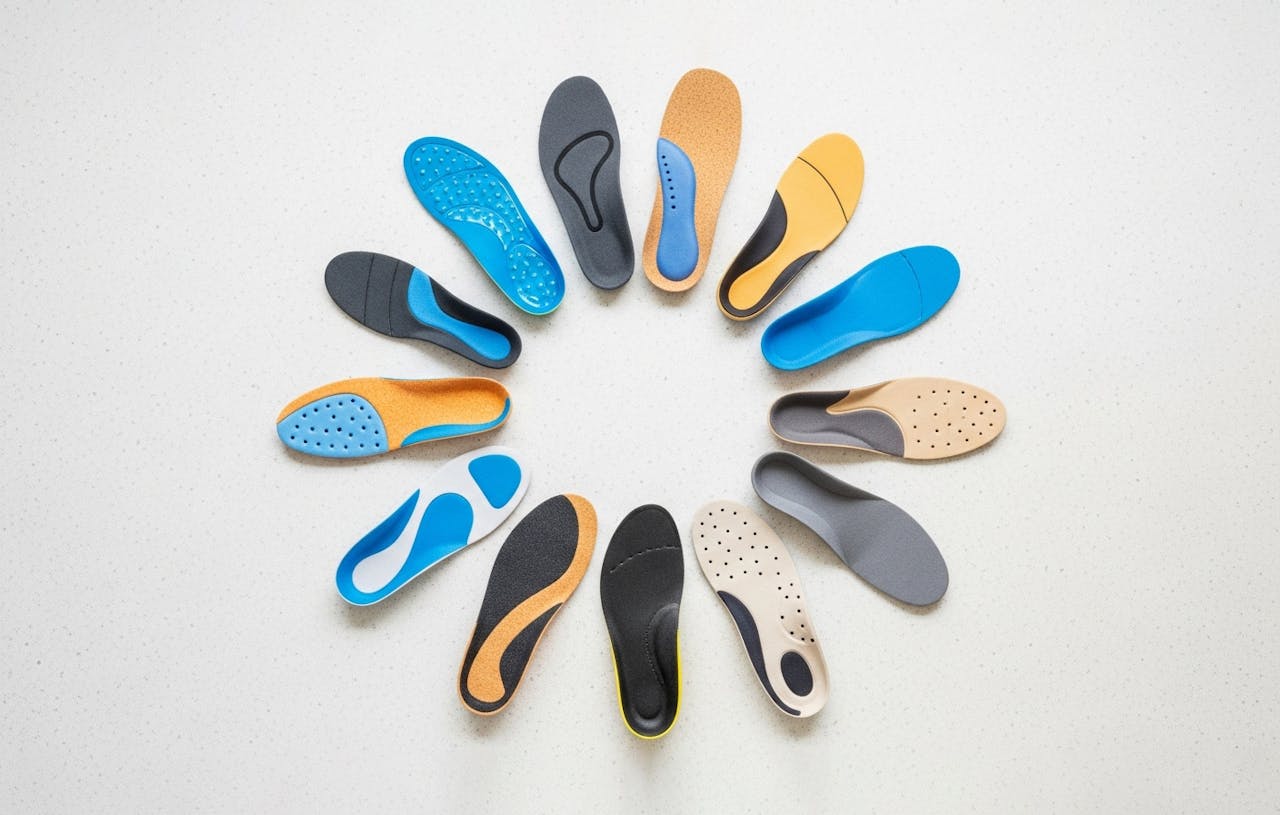
Blisters
A blister is a small pocket of fluid that forms within the upper layers of the skin, typically caused by forceful friction or burning, acting as a natural protective cushion for damaged tissue underneath.
Overview
What is it?
A foot blister is your body’s way of protecting itself. When the outer layer of skin (epidermis) is repeatedly rubbed against the layer beneath it, they separate. This space quickly fills with serum (a clear fluid) to cushion the sensitive area below from further damage. While usually minor, they can be painful enough to significantly hinder walking or sporting performance.
How common is it?
They are universally common. Almost everyone will experience a foot blister at some point, particularly when breaking in new shoes, increasing activity levels, or engaging in long-distance sports like running or hiking.

Symptoms & Causes
What are the symptoms?
Before a blister fully forms, you will often feel a "hotspot"—an area of skin that feels intensely warm and irritated. If activity continues, the classic raised bubble of fluid will appear. The fluid is usually clear (serum), but if deeper vessels are damaged, it may be red (blood blister) or, if infected, filled with yellow or greenish pus.
What does it feel like?
It typically starts as a burning sensation or sharp stinging pain with every step. Once formed, the pressure of the fluid inside the blister can cause a throbbing ache.
What causes it?
The vast majority of foot blisters are caused by a combination of friction, heat, and moisture.
- Ill-fitting Footwear: Shoes that are too tight, too loose, or have rough internal seams.
- Moisture: Sweaty feet or wet socks soften the skin, making it significantly more fragile and prone to tearing under friction.
- Biomechanics: This is a key area we assess. If your foot moves excessively inside your shoe due to poor mechanics (like overpronation causing sliding), it creates constant shearing forces that lead to recurrent blisters in the same spots.
- Deformities: Bunions or hammertoes often rub against the inside of shoes.
Some health conditions can include:
- Diabetes (Neuropathy): Patients with reduced sensation may not feel the initial "hotspot" warning sign and can develop severe, deep blisters without realising it.
- Eczema or Dyshidrosis: Skin conditions that can cause blistering independent of friction.

How is it Diagnosed?
Diagnosis is almost always immediate based on visual inspection.
What tests are used to diagnose it?
- Clinical Inspection: We check the blister’s appearance to determine if it is a simple friction blister or if it shows signs of infection (red streaks, hot surrounding skin, offensive discharge).
- Gait Analysis: For recurrent blisters, we don't just look at the blister; we look at why it is forming there. We analyse your walking pattern to see where excessive pressure and friction are occurring.
Foot Factor provides Expert Podiatry Treatment Tailored to You.
At Foot Factor, our podiatrists specialise in diagnosing and treating foot pain with precision and expertise. With advanced gait analysis, bespoke orthotics, and sports-focused podiatry care, we don’t just identify the problem—we provide a targeted solution to get you back to moving pain-free. Book a consultation today and take the first step toward lasting relief.

How is it Treated?
While most blisters heal naturally, podiatric care is vital for infected blisters, large painful ones, and crucially, for prevention.
- Acute Management:
- To Pop or Not to Pop: generally, do not pop a blister yourself, as the unbroken skin is a sterile barrier against infection. If it is large, painful, and likely to burst anyway, a podiatrist can safely drain it using sterile instruments while keeping the roof of the blister intact as a dressing.
- Padding: Using specialist felt or dressings to offload the area so you can continue to walk without pressure on the blister.
- Long-term Prevention (The Foot Factor Approach):
- Socks & Footwear: Advising on moisture-wicking socks (avoiding 100% cotton) and ensuring shoes are correctly fitted.
- Surgical Spirit: For some athletes, applying surgical spirit daily for a few weeks can "toughen up" susceptible areas of skin.
- Custom Orthotics: If poor mechanics are causing your foot to slide and rub repetitively, orthotics can stabilise the foot inside the shoe, eliminating the friction at its source.
Our Bespoke Orthotics give you the Right Support for Long-Term Relief.
At Foot Factor, our podiatrists specialise in diagnosing and treating foot pain with precision and expertise. With advanced gait analysis, bespoke orthotics, and sports-focused podiatry care, we don’t just identify the problem—we provide a targeted solution to get you back to moving pain-free. Book a consultation today and take the first step toward lasting relief.
Related Articles
Find expert tips, advice, and insights to support your foot health and active lifestyle.


